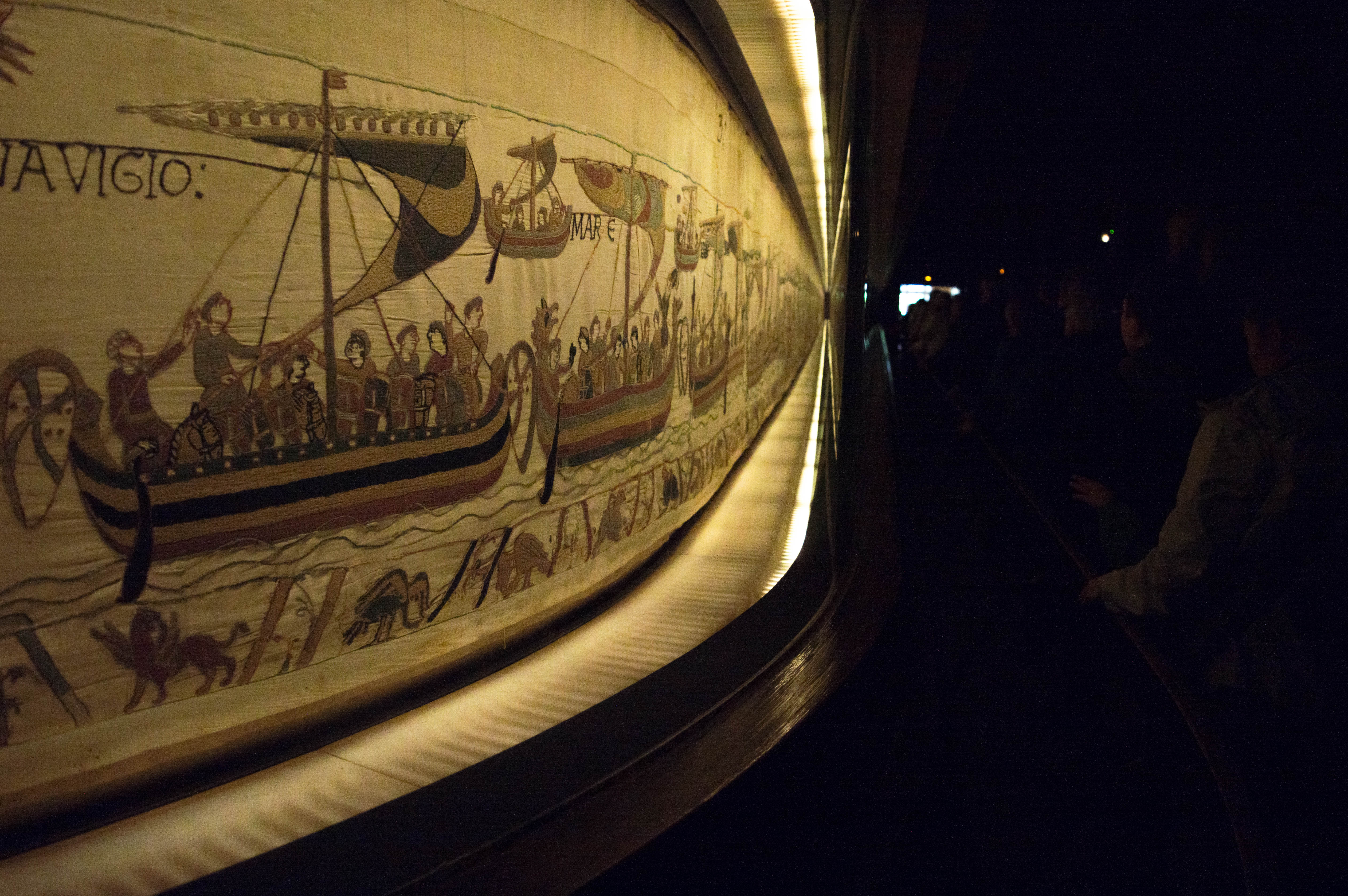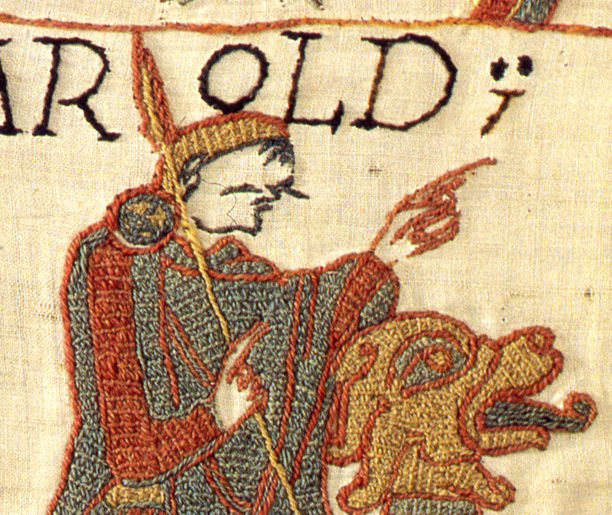Bayeux Tapestry tituli on:
[Wikipedia]
[Google]
[Amazon]
 The Bayeux Tapestry tituli are
The Bayeux Tapestry tituli are
 The Bayeux Tapestry was probably commissioned by William the Conqueror's half-brother,
The Bayeux Tapestry was probably commissioned by William the Conqueror's half-brother,
Bayeux Tapestry Museum
{{tapestry Anglo-Saxon art Embroidery Memory of the World Register Norman conquest of England Romanesque art Tapestries Military art Latin texts of Anglo-Saxon England
 The Bayeux Tapestry tituli are
The Bayeux Tapestry tituli are Medieval Latin
Medieval Latin was the form of Literary Latin used in Roman Catholic Western Europe during the Middle Ages. In this region it served as the primary written language, though local languages were also written to varying degrees. Latin functione ...
captions that are embroidered on the Bayeux Tapestry and describe scenes portrayed on the tapestry. These depict events leading up to the Norman conquest of England concerning William, Duke of Normandy
William I; ang, WillelmI (Bates ''William the Conqueror'' p. 33– 9 September 1087), usually known as William the Conqueror and sometimes William the Bastard, was the first Norman king of England, reigning from 1066 until his death in 10 ...
, and Harold, Earl of Wessex, later King of England, and culminating in the Battle of Hastings
The Battle of Hastings nrf, Batâle dé Hastings was fought on 14 October 1066 between the Norman-French army of William, the Duke of Normandy, and an English army under the Anglo-Saxon King Harold Godwinson, beginning the Norman Conque ...
.
Description
 The Bayeux Tapestry was probably commissioned by William the Conqueror's half-brother,
The Bayeux Tapestry was probably commissioned by William the Conqueror's half-brother, Bishop Odo
Odo of Bayeux (died 1097), Earl of Kent and Bishop of Bayeux, was the maternal half-brother of William the Conqueror, and was, for a time, second in power after the King of England.
Early life
Odo was the son of William the Conqueror's mother ...
, possibly at the same time as Bayeux Cathedral's construction in the 1070s, and completed by 1077 in time for display on the cathedral's dedication. Stenton (1961). It is embroidered in wool
Wool is the textile fibre obtained from sheep and other mammals, especially goats, rabbits, and camelids. The term may also refer to inorganic materials, such as mineral wool and glass wool, that have properties similar to animal wool. ...
yarn
Yarn is a long continuous length of interlocked fibres, used in sewing, crocheting, knitting, weaving, embroidery, ropemaking, and the production of textiles. Thread is a type of yarn intended for sewing by hand or machine. Modern manu ...
on a tabby-woven linen ground using outline or stem stitch for detailing and lettering.
A dark blue wool, almost black, is used for most of the tapestry's lettering but towards the end other colours are used, sometimes for each word and other times for each letter.
The content of the hanging is primarily pictorial but ''tituli'' are included on many scenes of the action to point out names of people and places or to explain briefly the event being depicted. Musset (2011). The text is in Latin (which for the most part is grammatically correct), and is extremely direct, with each statement being closely tied to the scenes depicted in a given section. The text is frequently abbreviated as indicated by tilde
The tilde () or , is a grapheme with several uses. The name of the character came into English from Spanish, which in turn came from the Latin '' titulus'', meaning "title" or "superscription". Its primary use is as a diacritic (accent) i ...
s placed over words at the place of omission of a letter. The words themselves are often demarcated by two points (which Lucien Musset
Lucien Musset (26 August 1922 – 15 December 2004) was a French historian, specializing in the Duchy of Normandy and the history of the Vikings.
Biography
Born in Rennes, Musset served as a professor of history at the University of Caen.
Selec ...
likens to colons); sometimes, more important section breaks are demarcated by three points. Many personal names, mostly in English, are not Latinised and the same applies for names of places in England and for Beaurain "Belrem" in France. In places the spelling shows an English influence, such as the phrase "at Hestenga ceastra", which in proper Latin would be "ad Hastingae castra"). Musset (2011), p. 35. Some French names are either archaic ("Rednes") or anglicised ("Bagias"). Sometimes "Franci" is used to describe the Normans who at that time certainly did not regard themselves as French. Musset (2011), p. 37.
The end of the tapestry has been missing from time immemorial and the final ''titulus'' "Et fuga verterunt Angli" is said by Lucien Musset to be "entirely spurious", added shortly before 1814 at a time of anti-English sentiment. The first word on the tapestry "Edward" is also a restoration.
Latin text with English translation
The English translation provided here is of a literal nature, to reflect the simplicity of the captions themselves. The numbering scheme uses the scene numbers on the tapestry's backing cloth, which were added sometime around 1800.Notes
References
Citations
Sources
* * * * * * * * * * *External links
Bayeux Tapestry Museum
{{tapestry Anglo-Saxon art Embroidery Memory of the World Register Norman conquest of England Romanesque art Tapestries Military art Latin texts of Anglo-Saxon England